
The Everest Base Camp Trek, by any means, is not an easy. And any trekking day should end with good food and comfortable sleep. So here’s everything you need to know about accommodation and hotels in the Everest Region.Types of Accommodation to Expect
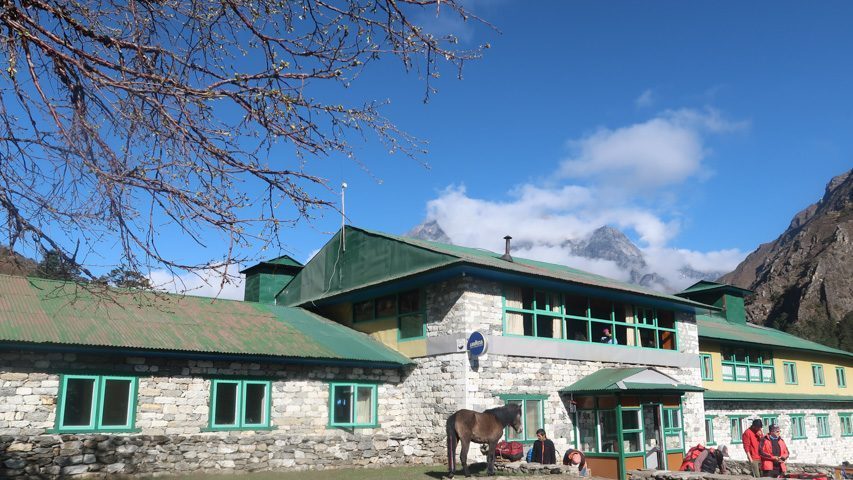
The Everest region is considered one of the best trekking routes in the world. This trek finds itself on the bucket list of trekkers all around, therein, a large number of trekkers flock to Nepal. Once ruled by only tea houses and basic lodges, the Everest region is burgeoning with hotels and lodges that do not want to compromise with comfort.
Everest is no longer a destination only for backpackers. Luxury trekkers and tourists can now experience the grandeur of the 8000-meter giants in the comfort of premium luxury. Travel and tour operators offer various luxury packages like helicopter tours to Everest Base Camp and sumptuous breakfast at a luxury hotel.
Let your wishlist and budget decide the type of accommodation for your stay at the roof of the world. You can tailor your visit to the Everest region accordingly. Adrenaline rushing adventure and luxury do not often come together, but this gap is getting closer in the Everest. The Everest Base Camp (EBC) trek is still highly adventurous, but you can now add a bit of luxury to it.
High altitude villages such as Thagnak, Dzongla, Pheriche, Lobuche, Gorakshep have basic facilities. But places like Lukla, Phakding, Namche Bazaar, Thame, Gokyo, Dingboche are offering the best of luxury in the mountains. Everest Summit Lodge in Monjo, Hotel Everest View in Syangboche, Yeti Mountain Home in Thame are gaining popularity as luxury brands of hotels in the mountains. Luxury might sound like too much to ask for in these places considering the difficulty of geography. It is a reality now.
There are several mid-range lodges and basic tea houses. These lodges and tea houses ensure you rooms to sleep and warm food to meet your daily calorie requirements.
1. Tea houses
Earlier, tea houses were the only place where trekkers could rest and find food in the mountains. They are still one of the most common accommodation options. These tea houses are mostly managed by the locals and often operated in the same house where the locals live.
Tea houses are relatively cheap and offer basic rooms on twin sharing and dormitories. You share a shower area and toilets with other trekkers. Tea houses offer their services in a similar price range, and the food menu is consistent all across. It is the norm to dine in the same tea house you are staying in. This is how the locals make most of their income by providing full board services.
Tea-house is the last place you would go in search of luxury. Tea houses have basic rooms with a wooden bed, foam pad, pillow, and a blanket. You can always ask for an additional blanket for an extra charge. Usually, they charge USD 20 for an electric blanket. Normal ones cost a bit less.
Most of the tea houses have a solar or gas heated shower. Tea houses charge you USD 2 to 6 for a hot shower. Cold showers are free of cost. You can get a bucket of warm water to clean yourself for less money.
Tea houses have a heated dining area and offer a limited food menu with a choice of Nepali and continental delicacies. One meal, on average, costs USD 5 to 10. The food will not taste like it does in the restaurants of Kathmandu but will fulfill your precious calorie demand for a tough hike.
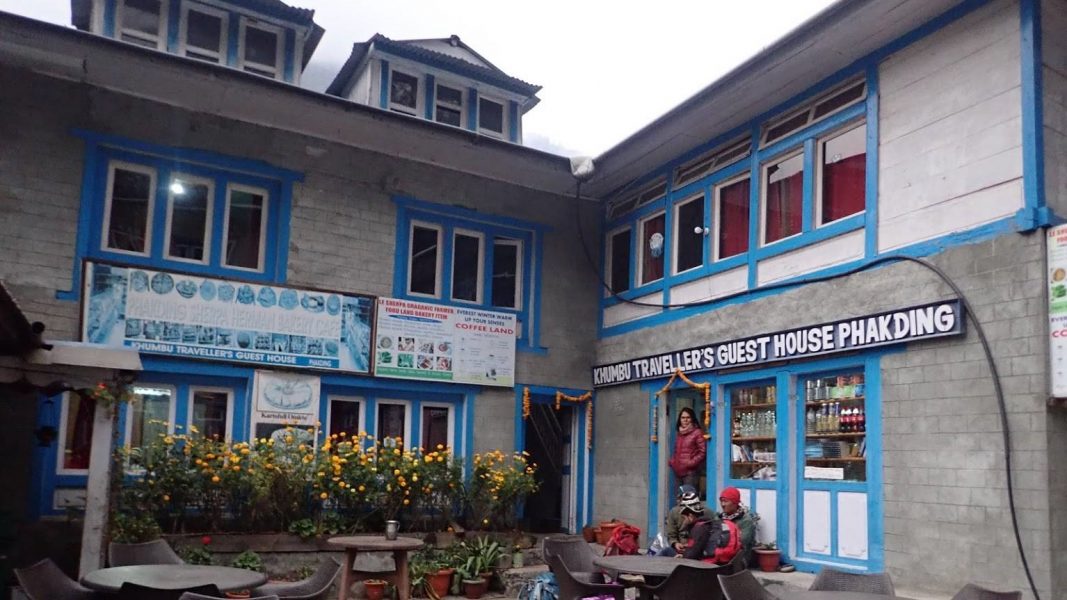
2. Mid-range lodges
With more tourist inflow, there are more facilities. This is especially true in the case of trekking facilities in the Everest region. During your Everest Base Camp trek, you will find different classes and categories of lodges and hotels. A notch upscale and facilitated than tea houses, mid-range lodges are growing in numbers in the Everest region. They are a perfect mix of proper facilities at a reasonable price.
Lodges are relatively larger than tea houses and well managed. These mid-range lodges have well-equipped dining, broader food choices, comfortable beds with soft mattresses, and attached bathroom with hot shower. For all these services, they charge a bit more than the tea houses but offer the services relatively cheap. You will find rooms with these services from Rs 500 to 1000 (USD 5 to 10 approximately) depending on the tourist season. The food price is similar to that of tea houses.
3. Luxury Hotels
Fancy new hotels and lodges are a quite surprising addition to the Everest Base Camp trek. Towns like Lukla, Namche, and Dingboche remind you of restaurants in Kathmandu that serve fresh brewed coffee and bakery. If you do not want to compromise comfort and luxury, this is your best option.
You will be amazed by the luxury hotels in the Everest region like Yeti Mountain Home in Kongde and Hotel Everest View in Syangboche. You can fly on a helicopter for lavish breakfast with a view of Mt. Everest. Everest Summit Lodge in Monjo, Hotel Everest View in Syangboche, chain of Yeti Mountain Home hotels are some of the luxury options. Among them, Hotel Everest View made a Guinness world record of being the highest placed hotel in the world (13,000 ft).
Luxury hotels are mostly run by hoteliers and corporate houses. They provide well-furnished rooms and a splendid dining experience. One can also request amenities such as an electric mattress pad, thick quilts, and room heater. These come at a price and may go well over the limit of budget travelers. They charge you around USD 200 per night per person, including breakfast, charging, and WiFi services.

Do I need to Book Lodges in Advance?
The simple answer is YES! However, it largely depends on the season you are trekking to Everest Base Camp. It is always better to be safe than sorry and wander around, asking for a room. It would be relatively easier to find a place during the off-season (from December end to February & June to September). Since not all lodges are open during the off-season, especially in the winter, it would still be a challenge to find the best facilities. Booking in advance can secure you the comfort in long and cold nights of the mountain, in any season.
When you are traveling during the peak seasons (from March to May & mid September to mid December), the first thing you should do is book your lodges. If you are going through an agency, they will manage all the logistics, so you will have one less thing to worry about. If you want to trek on your own, booking lodges online in Everest Region in advance will be your best solution.
An alternative would be to talk to your guide or the lodge you are staying to reserve a room in the next destination. The lodge owners most likely inform their relatives or close friend’s lodges, which means your choice of hotel could be limited. At least, you can be sure that you will have a place to crash in.
What kind of services can I expect in Everest Base Camp Trek?
Rooms
The quality of rooms is directly related to the price you pay and the altitude you are at. Tea houses and lodges up to Namche Bazaar are well equipped with electricity supply, attached bathroom with hot shower, western toilet, and WiFi. As you go higher, the rooms just become rooms where you spend the night.
Most of the rooms are on twin sharing basis in the Everest region. There are also options for single rooms and dormitories. You will typically find two single beds with a table. Rooms are usually insulated with wood, and the floor may have basic PVC carpet.
Rooms also usually have hooks, and some might even have shelves. Doors can be locked with provided padlocks. However, there could be instances where you may get a room without one. Carrying a small padlock can help a lot in case you need it.
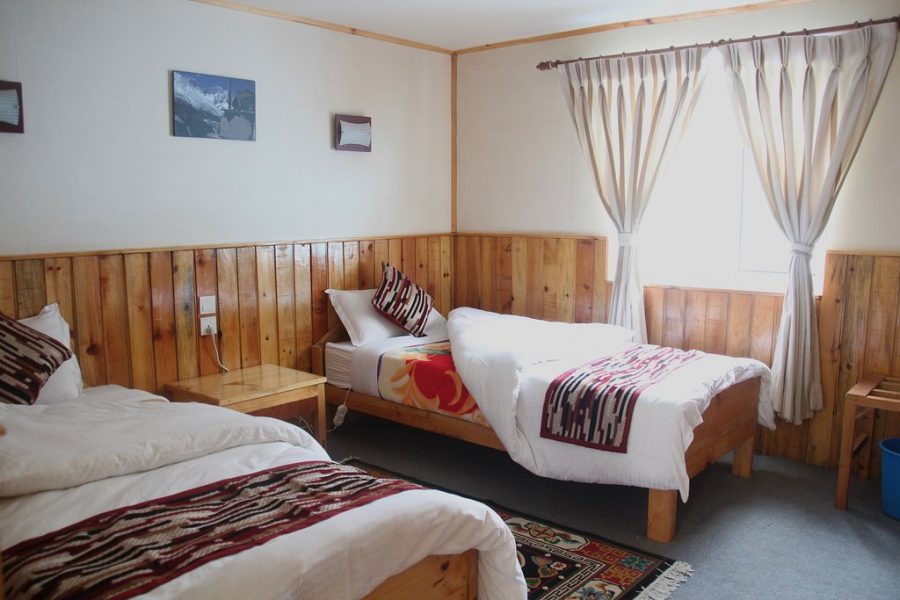
Food and drinks
Most tea houses and lodges offer similar food and drinks in Everest Base Camp Trek. They all serve breakfast, lunch, and dinner, along with other snacks. Almost all lodges serve bread, eggs, potatoes, pancakes, cereals, chapatis, Tibetan bread in a different style for breakfast. You can ask anything from the menu as your breakfast and dining staff and will happily prepare for you at your preferred time. You can have a substantial breakfast for an average cost of NRS 500.
Trekkers usually eat breakfast around 7 am before starting the day’s hike. It is advisable to have a heavy breakfast and lunch around midday in a tea house on the trail.
Nepalis prefer to have a big lunch, and it helps a lot to fulfill your nutrients and replenish your energy during the trek. For lunch, rice with lentil soup and curry, which is called Daal Bhaat, is popular among trekkers all over Nepal. You can easily find fried rice, a variety of noodles, momo (dumplings), pasta, spaghetti, and pizza for lunch. A good portion of lunch or dinner will cost you in a range of NRS 500 to 1000.
Interestingly, most of the destinations in the Everest Base Camp trek have coffee places and bakeries. You can sip freshly brewed coffee, tea, and bakery items. Apple pies, cakes, and cookies are common in most areas. You can find them in the alleys of Sherpa towns or at the same lodge, you are staying at. Take some precautions while drinking tea and coffee as caffeine is not considered suitable because of altitude sickness.
Black tea, ginger lemon honey, lemon tea, hot water are quite cherished hot beverages during the trek. They rehydrate, taste good, and help you recover from altitude sickness and common cold too. These drinks are available for a price between NRS 50 to 150 depending on the altitude.
Strictly avoid alcoholic beverages during the trek. It can cause severe health issues and trigger altitude sickness at high altitude.
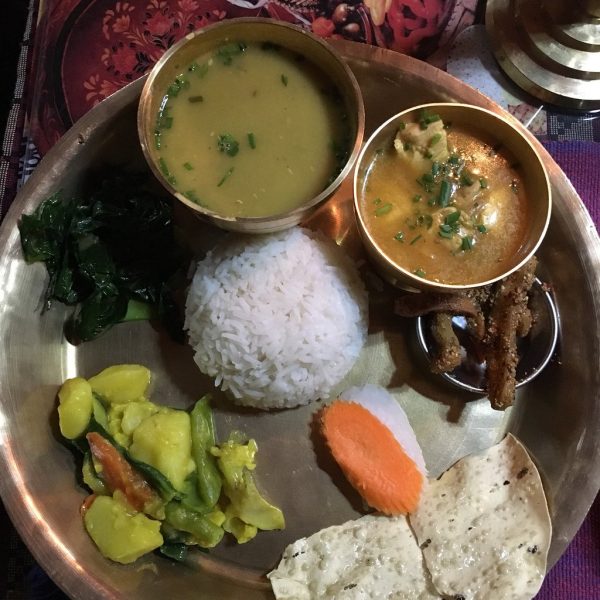
Water
Water is critical and life-saving beverage in the mountains. As you will be losing a lot of liquid in the form of sweat, urine, and breath, you will need to rehydrate yourself. Dehydration could become a serious concern during the trek. Some recommend a specific quantity of water you should drink in liters. But, doctors suggest that you should remain well hydrated than drinking a particular amount of water. Watch for the signs of hydration, and you should not feel thirsty, and the color of urine should not be cloudy or yellow. Always remember, water is the first aid for altitude sickness. Stay hydrated!
Most importantly, the cleanliness of the water you drink is critical. Never drink water straight out of the taps. Treat your water with purification tablets or liquid before drinking. You can also buy bottled water, but that will cost you Rs 100 to 400 compared to Rs 20 in Kathmandu. The safest water to drink is boiled water, which you can refill from tea houses and lodges. They will charge you in a range of Rs 100 to 400 for boiled water. And the hot water will protect you from common cold, coughs and sore throat too. Carry a water bottle and refill it as required.
Connectivity
Mobile connections work well in the lower areas while it gets weaker as you go higher. However, it works reasonably well at Gorakshep, the last resting point before Everest Base Camp. Places like Phakding, Namche, and Tengboche have functional cellular mobile connectivity. Both NTC and Ncell will work in the Everest region.
Internet/WiFi
Most tea houses and lodges have WiFi connectivity for a small price of USD 5 to 10 that can be used at multiple locations. The WiFi service is provided by Everest Link, and lodges provide you with a prepaid card for the volume-based Internet, which you can use to stay connected. They offer different packages such as USD 20 for 10 GB of data valid for 30 days. You can proudly brag about your stunning trek using the Internet in the highest places in the world.
Hot Shower
A hot shower is one of the best moments of trek. Tea houses provide either gas or solar-powered shower. Taking a hot shower after a long day of the sweaty hike is relaxing, and your body feels a ton lighter. A hot shower will cost you between USD 2 to 6, and it is totally worth it. An icy cold shower is free if you dare to take one.
Charging your device
Keeping your electronic devices charged and working is essential. It is more critical when one of the motives of your trek is to take photographs. You can charge your devices for USD 2 to 3 per device and USD 10 for power bank. You can charge your device for free if your room has a plug. But it is rare in places where the lodges are solar-powered, especially in the high altitude. Carrying a portable solar charger will save you some money if you are on a budget.
Cleanliness
As the Everest Base Camp trek is a well-established trekking route with pretty good facilities, cleanliness is not much of an issue. Accommodations of all categories are not equally clean, most of them are reasonably maintained and sanitary, considering the remoteness and cost to maintain the facilities. All the rooms have dust bins, and toilets are also maintained to an extent. However, hotels in Gorakshep is a bit of a compromise in terms of room facilities and toilet cleanliness.
Trails are pretty dusty. So, it is recommended to cover your mouth and nose to protect yourself from notorious Khumbu cough. The garbage issue has become much better with the management of solid waste. You will find dust bins along the trail. Please note that from 2020, it is planned to ban plastics in the Everest trek. Always remember the motto, ‘Leave nothing but footprints and take nothing but photographs.
Toilets
Toilet facilities are simple in lodges in the high altitude. Mid-range hotels provide attached toilets in places like Namche, Tengboche, Dingboche, and Gokyo. In other areas, the toilets are relatively basic. Some lodges have managed both western-style and squat style toilets. While some have outhouses with a pit on the floor, which is used when everything is frozen during winter. However, none of the toilets have a roll of toilet paper. This is the most essential item to pack as it will cost you comparatively high if you have to buy toilet paper in the mountain.
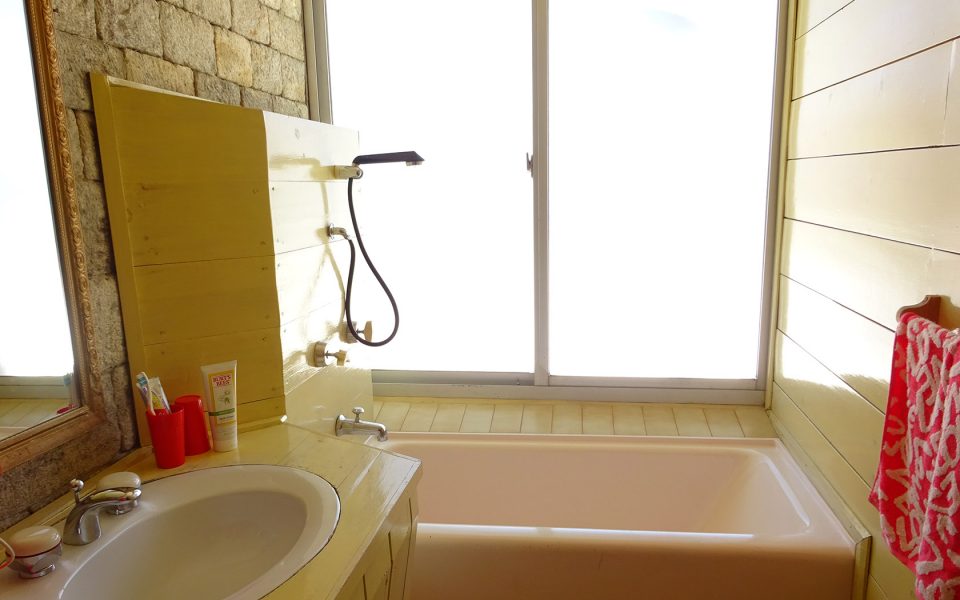
Is there Internet facility available in the Everest Region?
The easy answer is yes. And you will find internet connectivity quite easily in most of the campsites. At lower altitudes, till Tengboche, cellular connectivity is quite reliable. Beyond that, you have to rely on the WiFi connectivity of the hotel, mostly prepaid connectivity using Everest Link. There is cellular connectivity at Gorakshep, where you can use 3G but may not be entirely dependable as the connection is usually weak. You also have a choice of prepaid internet plans for the location you are staying at or the plan that works in multiple places.
The price for Internet connectivity of the Everest link is between NRS 500 and NRS 3000, depending on the data volume.
Are hotels open throughout the year?
All the locals do not stay in all the villages of the Everest region throughout the year. Most of the people come down to warmer places during winter (December to February) and climb back to higher altitudes during the trekking season. However, with the burgeoning tourism, tea houses and lodges operate throughout the year now. Although fewer lodges remain open during the peak winter, you will not go without shelter even in extreme weather. Just remember to book your place so that you will have a place to take a rest and hot food waiting for you. For months other than the winter, lodges are fully operational.
Do I need to carry a sleeping bag?
Tea houses and lodges are extremely cold during autumn and winter nights. Although you can get a new quilt and electric blanket in some lodges, that may not be enough during extreme weather, especially in the higher elevations. A sleeping bag will keep you warm in the coldest of nights so you might want to add it to your packing list for Everest Region.
Bed and blankets may not be as clean as you wish them to be. So, the best bet to get a good night’s sleep is inside your sleeping bag. You can use the provided bed and quilt and complement your sleeping bag for extra warmth. It is advisable to use a sleeping bag rated for – 10°C (14°F) or – 20°C (-4°F) to keep you warm on cold nights.
If you don’t want to buy a separate sleeping bag for this trip, you can rent one in Kathmandu or even in Namche Bazaar. You may invest in a suitable sleeping bag only if you are sure you will be making another use of it.
What are hotels like in:
Lukla
Lukla has quite an excellent range of hotels, from tea houses to luxury hotels. However, you will not be staying here on the first day. Instead, you will be trekking to either Phakding or Monjo after landing at Lukla. You will be ending your trek in Lukla and probably stay here overnight during your return if your itinerary includes flying out of Lukla.
Hotels in Lukla are quite expensive than on the trail but offer comparatively better services. You will also find plenty of restaurants, cafes, and pubs in Lukla. You will forget that you are in the Everest region and feel pretty much in Thamel without vehicles and crowd, but with a caravan of yaks and mules.

Namche Bazaar
Namche Bazaar, often referred to as the capital of Sherpas, is a beautiful town of Solukhumbu where almost every house is a hotel, lodge, or a tea house. This is a mini Kathmandu with plenty of fancy dining places, cafes, bakeries, and coffee shops. You will have plenty of accommodations to choose from, ranging from tea houses to luxury hotels.
Trekkers mostly spend two to three nights in Namche to get accustomed to the altitude. Hotels and lodges here offer the best hotel experience on the entire trek. Either you choose to stay in moderate lodges, or fancy ones like Yeti Mountain Home or Hotel Everest View, each of them come with goodies for the price you pay.
Be aware that hotels in Namche may raise your expectations for the facilities you get in the whole trek. While you are returning after completing the trek, this is a cozy and relaxing place and recollect your trek memories.
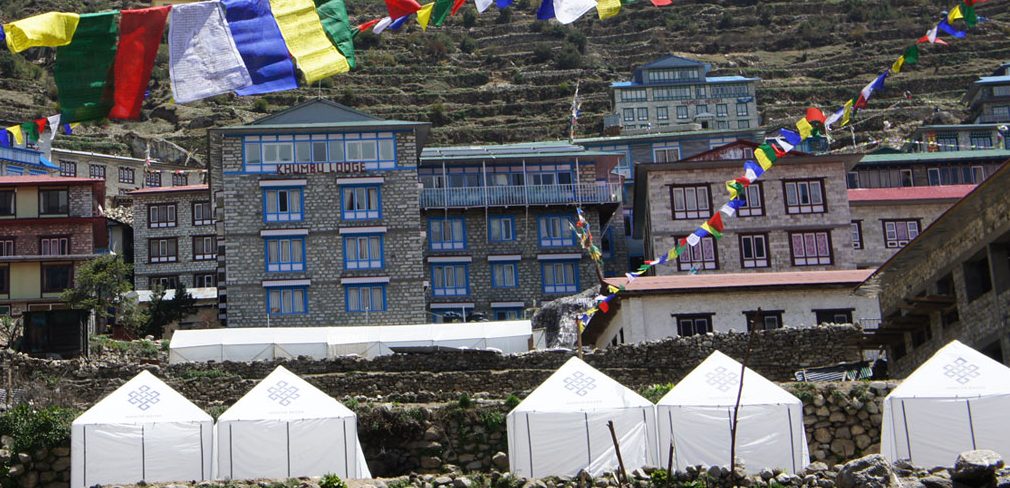
Dingboche
Dingboche is a large and well-facilitated Sherpa village. This village also has some of the finest lodges and hotels of the entire trek. You feel at home with Sherpas here. There are plenty of lodges and hotels in Dingboche to choose from depending on your budget. As it is a permanent settlement, hotels are open throughout the year despite being at an altitude of 4410 meters. Local residents may choose to go down in winter, but some will stay back to run their business. They serve you fresh locally grown vegetables and potatoes. As trekkers from both the main trail to EBC and three passes stay here, it can get pretty crowded. So, the booking will help make your room waiting for you while you reach Dingboche.

Lobuche
Lobuche is one of the highest sleeping points in the trail at 4940 meters. The place can get extremely cold and tough to sleep due to high altitude. There are quite a good number of lodges here. It gets pretty crowded during the peak season as this is a confluence of all the alternative trails in the Everest region, including Three High Passes, Everest Base Camp trail, Gokyo – Cho La trail.
Booking your room for Lobuche and Gorakshep is absolutely recommended as it can get quite crowded and due to a limited number of lodges. Most of the lodges here provide a basic service.

Gorakshep
Gorakshep is the highest place you will spend the night in the entire Everest region at 5164 meters. Lodges in Gorakshep are basic with average facilities despite being the most challenging place to spend the night due to extreme cold and high altitude. Take precautions to keep yourself warm and take plenty of rest here to protect yourself from brutal elevation and temperature. With limited lodges, this will be a crowded place, and you might end up sharing a room with other trekkers or sleeping on the dining. So, prioritize pre-booking your room for Gorakshep.

Accommodation, Food and Services in 3 Passes Trek
Accommodation, food, and available services in the Everest Three passes trek are similar to facilities available in the rest of the EBC trail. Most of the trails in the region have the same range of tea houses, lodges, and premium hotels. Places like Thame, Lundeng, Gokyo, Thagnak, Dzongla, and Chhukung are unique rest points in the three passes trek. All these have basic tea houses and medium-range lodges. Chhukung, Dzongla, Thagnak have relatively fewer lodges. As these parts are not heavily crowded, it would not be a huge problem. They can still fill up pretty fast during the peak trekking seasons. The price and quality of food and accommodation are comparable to other places like Dingboche and Lobuche.
Accommodation, Food and Services in Gokyo Lakes Trek
Gokyo Lakes trek is one of the side trips in the Everest region. You can also go to Everest Base Camp crossing the Cho La pass via Gokyo Lakes. Some of the routes overlap with the three passes trek. Stops like Dole, Machhermo, have lodges and tea houses to accommodate the trekkers. Gokyo has a good number of lodges and guest houses. Trekkers from three passes and Gokyo trail confluence at Gokyo. So, hotels in Gokyo can get quite crowded as it is also an acclimatization place where trekkers stay for two nights. Other areas will have a relatively low number of trekkers in this route, you will not have to struggle to find rooms. However, the peak season will still be crowded. Booking will secure your places even in the busiest of seasons.

Accommodation, Food and Services in EBC trek from Jiri
On this variation of the Everest trek, you will start from Jiri. You will get to Jiri by bus from Kathmandu. This alternative route in the Solu region passes through Bhandar, Sete, Junbesi, Nunthala, Bhupsa, and Surke. Finally, it connects with the main EBC trail near Lukla at Chheplung. The hotels and lodges from Jiri to Phakding vary in size and services, but they all provide services for similar prices. It is a lot cheaper to pay for rooms, food and other services. They provide rooms for USD 1 to 2 and make money from serving food, which is also less expensive compared to the place above Lukla. You can get a hot shower, boiled water, charging devices for free or nominal fees compared to lodges in high altitudes.
Accommodation, Food and Services in EBC trek from Salleri/Phaplu
You can fly / drive from Kathmandu to Phaplu or take a bus to Salleri and join the path from Jiri and head to Phakding. Phaplu to Everest Base Camp Trek passes through Kharikhola, Thamedanda and Puiyan before merging with the trail at Chheplung near Phakding. Similar to lodges in the path from Jiri, the lodges and tea houses are well equipped at a lower cost. The route is shorter than trekking from Jiri, and you will join with the main trail sooner. Since most trekkers start from Lukla, both of these trails are quieter and less crowded.







